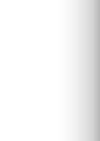


arzani F, Sharifian S, loghmani M. Health risk assessment and accumulation of copper and lead in snapper (Lutjanus ehrenbergi), grunter (Pomdasys Kaakan) and halibut (Psettodes erumei) in Bandar Abas. JFST 2021; 10 (3) :301-312
URL:
http://jfst.modares.ac.ir/article-6-52126-en.html
1- Institute of Applied Science Technology parsian branch
2- chabahar maritime university , sharifian.salim@hotmail.com
3- chabahar maritime university
Abstract: (3341 Views)
Fish is one of the most important sources of protein for human nutrition and health. Therefore, the monitoring of heavy metals accumulation in commercial fish is always important. In the present study, the accumulation of heavy metals (copper and lead) in muscle tissue and their potential hazards for consumers in three species of high-consumption fish in the south of the country(BandarAbas), namely black-spot snapper (Lutjanus ehrenbergi), javelin grunter (Pomdasys Kaakan) and Indian halibut (Psettodes erumei) was examined. The average concentrations (µg/g dry weight) of copper snapper, grunter and halibut were 0.078±0.017, 0.136±0.025, and 0.127±0.013, respectively, while the accumulation of lead in them was 0.079±0.018, 0.090±023, and 0.107±0.031, respectively. The highest daily intake (µg/ kg body weight/ day) of copper was equal to 0.023 and due to consumption of grunter, while the highest daily intake of lead was obtained due to consumption of halibut and equal to 0.018. The daily and weekly intake of both metals and all three fish species was less than the EPA reference dose and tolerable intake (TDI) values provided by the FAO / WHO Joint Commission. The risk level of target hazard quotient (THQ) calculated for both metals was significantly lower than 1. The results showed that the urban communities of Hormozgan province with the calculated consumption are not exposed to any risk due to the accumulation of heavy metals studied in this study.
Article Type:
Original Research |
Subject:
Aquativc toxicology Received: 2021/04/30 | Published: 2021/08/20
Send email to the article author






































